
by Somya Devi | Oct 17, 2017 | Astrology, Conjunctions, Holy Days, Uncategorized
In this Kali Yuga, it almost always feels like we could use a little more light in the world, but especially around this time of year when the days are getting shorter and darker (northern hemisphere bias). The last few months seem to have piled on more natural disasters than usual, although sometimes it feels like this may be becoming the norm. This New Moon brings the Hindu festival of Diwali, which is a celebratory time to invite more light into our lives and into the world.
The darkest Moon time, which begins our next lunar cycle, occurs at 12:12 pm PDT this Thursday, October 19th. The new cycle begins with Sun and Moon joined in sidereal Libra, with Mercury and Jupiter there as well. Libra is a sign about creating more balance (which presents a bit of a challenge with the imbalanced appearance of the chart for this New Moon). It falls in the Vedic nakshatra of Chitra, a star-sign that enhances our opportunity to bring beauty and harmony in the world.
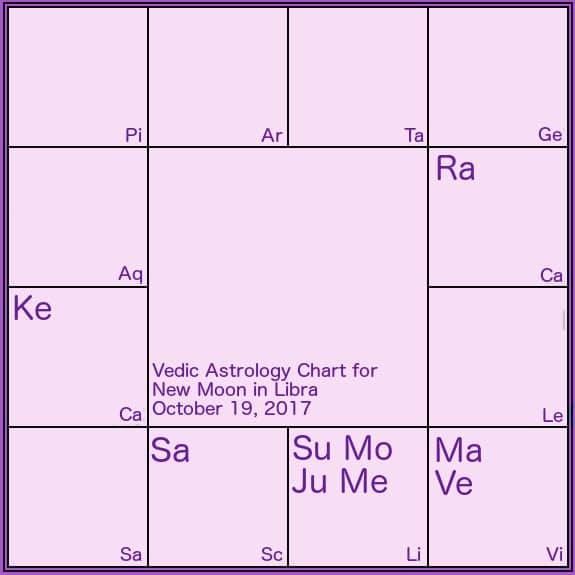
Libra
Libra is an air sign where we bring the principles of Venus into active expression. Venus is the planet of beauty, desire, nature, and human love, so the Libra cycle will encourage us to be more creative, connect with nature, and nurture our relationships. As an air sign (a bit intellectual, and inspiring movement), we will seek ways to balance or re-balance relationships throughout this cycle. Both Jupiter and Mercury are also positioned in Libra, close to the Sun and Moon at this time, which adds the influences of our higher beliefs as well as our analytical minds to our creative endeavors this month.
Debilitated Venus
Venus itself, the ruler of Libra, is currently transiting Virgo, his sign of debilitation. Debilitated Venus doesn’t necessarily translate as “relationships will be bad,” but it adds a highly intellectual, analytical, and practical motivation to the planet of pleasure and beauty. This is the opposite position to exalted Venus in Pisces, which we experienced for four months earlier this year (February through May), when we felt inspired to align our desires and relationships with our highest beliefs, principles, and purpose. Now, with Venus in Virgo, we are prompted to scrutinize all the little details of our relationships and pleasurable pursuits, and make sure that they are serving some practical need for us on the earth plane. We may also be scrutinizing our partners, or others around us, and getting caught up around the nuances of language or ideas. With Venus ruling this upcoming lunar cycle, and Mercury joining closely to the Sun and Moon at its start, desire for practicality will be strong this month.
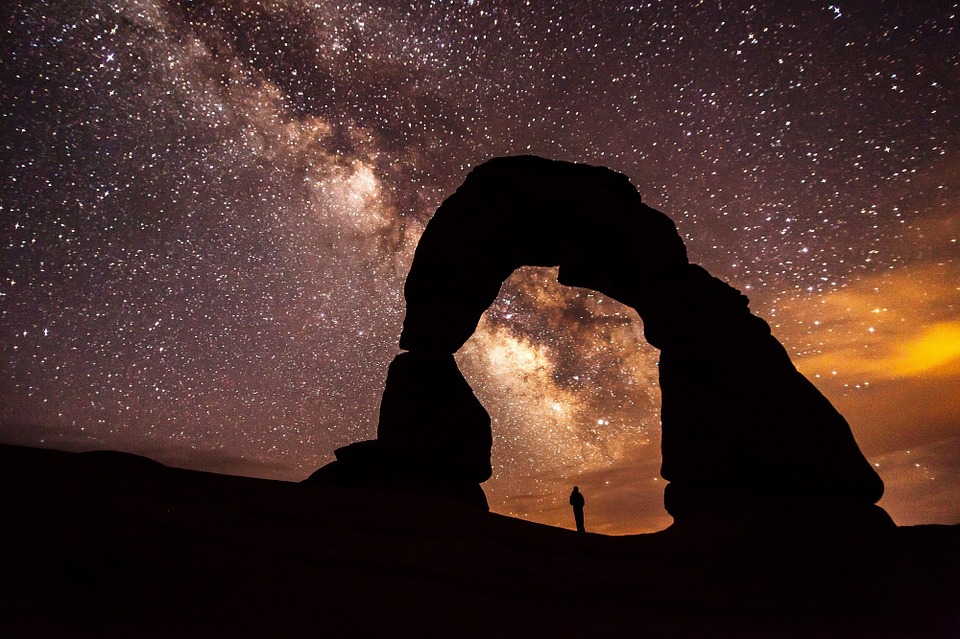 Chitra
Chitra
The Vedic nakshatra where this lunar cycle begins is Chitra, “the brilliant.” This bright star in Virgo (Chitra bridges Virgo and Libra) is ruled by Vishvakarma, the deity known as the celestial architect. Imagine that energy of one who has the ability to place all the stars in the sky and set them in perfect motion … that type of both precise and artistic energy is what we are able to call in this month. There is a powerful creative potency here, and a great potential for improving relationships. It is also an supportive energy for organizing, repairing, or redesigning your home space.
Diwali
On the new Moon of the Hindu month of Ashwin (this month), we celebrate Diwali, the festival of lights. The festival actually began on Monday, the 16th (North America), the 13th waning Moon phase of the previous cycle. This day is known as Dhanteras, or Dhanvantari Tryodashi. Buying gold or silver (or any metals) on Dhanteras is widely practiced in Hindu culture. It is also the celebration of the appearance of Lord Dhanvantari, the father of Ayurvedic medicine. This day, and Diwali in general, is an excellent time for nurturing and calling in blessings for any type of healing or healing practice.
Diwali is a time to invite more light into our lives, our hearts, and our world. This festival celebrates the victory of light over darkness, which is something to rejoice in and have faith in, even if we can’t outwardly observe it sometimes. The positive vibrations we create internally are the only place to start for growing and spreading them externally. It is a powerful time to connect to the Goddess Lakshmi, calling in her blessings for both material and spiritual prosperity.
This holiday also commemorates Lord Ram’s and Sita’s return from exile after fourteen years (story from the Ramayana). Lord Ram embodies the highest qualities of dharma, devotion, compassion, courage, and leadership. Diwali is also the start of a new lunar cycle, so it’s a great time to go within and summon these qualities to awaken and live through you.
Diwali (also seen as Divali, Deepawali or Deepavali) comes from the sanskrit words deepa (light) and avali (row). It is traditional to light candles throughout Diwali, inviting the highest light into our homes and hearts … but in consideration of the destructive wildfires raging in California right now, I’m using electronic tea lights this year.
The candles are lit to remind us of the inner divine light in us all. Though one flame can be used to light many others, it is not diminished by sharing its power of illumination. We can pray for the peace and happiness of all beings, and each one’s awareness of their inner light.
Sun in Libra
It is pertinent to remember and to celebrate and call forth our inner light during this particular Dark Moon time, because the Sun, the planet of our inner power, strength, and divine light, is also in his sign of “debilitation,” in Libra.
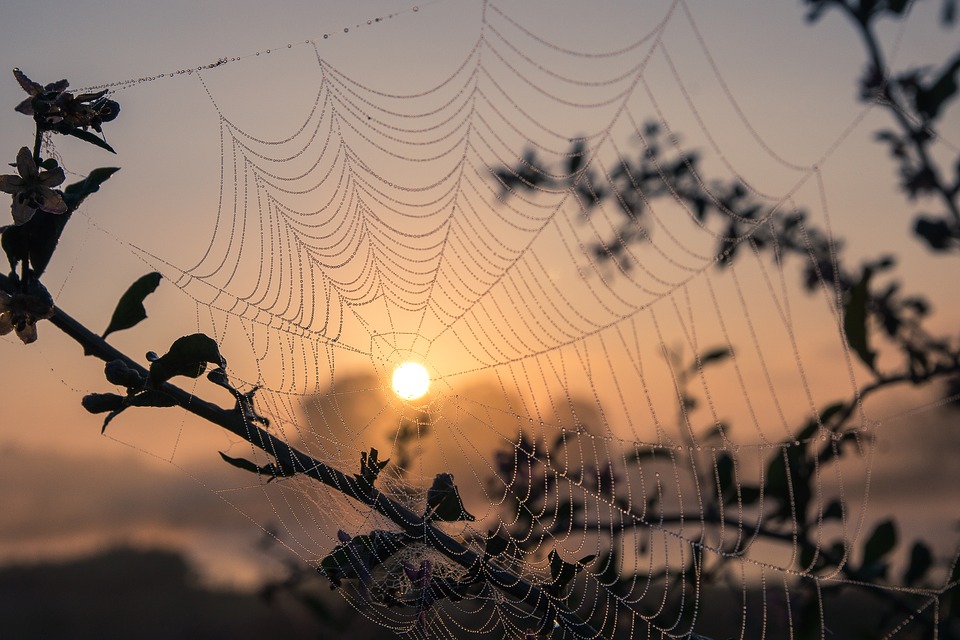
Since Libra is the sign of balance and relationships, we often give a lot of our personal power to our relationships with others when Sun is in Libra. We may try too hard to care for others, forgetting to nourish the divine spark in ourselves, or we may simply feel depleted by trying to balance too much in life, losing touch with our personal strength and vitality.
At the beginning of this cycle, set an intention for a mindful self-care routine this month. Light some candles (or turn them on) for Diwali on the Dark Moon night, and if possible, take some time each day to offer yourself some time to nourish and honor your personal light. Self-care practices can include yoga, meditation, chanting, art, or self-abhyangha (oil massage). You can also make some herbal tea to nourish yourself during this vata (cold and dry) season.
Kala Saarpa
The imbalance of the chart that I was talking about is referring to the ongoing Kala Saarpa yoga we see, wherein all seven physical planets are on one side of the nodal Rahu-Ketu axis. With these planets to one side of the nodes, the subconscious shadow energy (similar to eclipse energy) becomes more present, and a lot of unresolved business may arise. There is more agitation of the environment in general. This chart is particularly imbalanced, with the Sun, Moon, Jupiter and Mercury halfway between the nodes, and the other planets joining them on either side. As we enter this darker time of year, it is especially important to keep up our consciousness development and self-improvement practices, so as not to be ruled by the unconscious forces within.
Diwali is a potent opportunity to set this conscious intention, and to call forth more light and love into our hearts, and then to spread it out into the world! With so much trauma and disaster occurring all over the planet, our light, love, and service are needed now more than ever. No matter how small a part we can play, let us do what we can to increase harmony on and with the planet.
Ram Ram
You can click here to discover your specific strengths and challenges through a personal Vedic astrology chart reading with me.
Save
Save
Save
Save

by Somya Devi | Sep 20, 2017 | Astrology, Events, Holy Days
Maha Navaratri 2017 begins today! In this important Hindu holiday, we celebrate the Goddess through “the great nine nights” (nav = nine, ratri = night). This festival will run through September 30th, the first ten days of this new lunar cycle. Goddess, Devi, Shakti, Durga, Divine Mother—the many names and forms all represent the dynamic and fluid feminine power that enlivens all of existence.
She is the creatrix, the warrioress, the nurturer, the purifyer, the protector. While she’s in the innocent and fertile maiden so is she the wise and learned crone. Both the nurturing mother, and the one who gives “tough love.” The impassioned lover, the devoted bhakta, the disciplined yogini. We see Goddess appear through us in innumerable manifestations. Through her many forms she teaches us and offers us countless blessings–love, compassion, courage, learning, discipline, surrender, success, enlightenment, and bliss. This festival is a time for celebrating the supreme feminine power in all her glory, and the many blessings she bestows upon us.
As with most Hindu celebrations, this festival correlates with the lunar calendar, and thus begins on the first day of the waxing Moon after the New Moon of September 19th. The celebration is through the “nine nights” of 21st through 29th, and into the eleventh morning known as Vijayadashami, “the day of victory,” on September 30th in some places (because of the way the lunar phases correlate with the solar days… Check the Vedic panchanga for your city to see the exact dates for Navaratri where you are.). Worship during Navaratri is most generally dedicated to Goddess in the form of Durga, the demon-slayer, but there is much nuance and variation to practice and forms of celebration throughout India. Above all, Navaratri is a community celebration of the Divine Mother, and the love, abundance and protection she gives.
There are many Navaratri celebrations throughout the year, but the fall-time Navaratri is the most widely celebrated, and is thus called Maha Navaratri – “the great nine nights”. It correlates with the time of the harvest, a time to give thanks for the abundance of the year’s work. Grains and crops are often offered to Devi as part of the celebrations. Ritualistic worship (puja) typically occurs in homes and temples throughout the nine nights and into the tenth morning of celebration.
The Many Forms of Goddess
Durga-Lakshmi-Sarasvati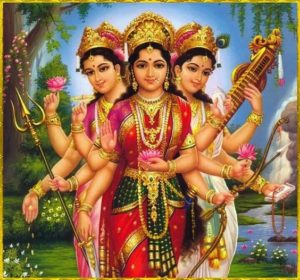
In Kerala and other places in India, the first three nights of worship are dedicated to Durga (the invincible), the next three to Lakshmi (Goddess of prosperity), and the final three to Sarasvati (Goddess of learning). Durga, also celebrated as her incarnation of Kali, helps us to destroy and remove the negative tendencies in our minds and hearts, freeing us from the obstructions to our spiritual and material pursuits. Lakshmi helps us to cultivate positive qualities like compassion and devotion, and leads us towards both spiritual and material prosperity. Sarasvati assists us in attaining knowledge and wisdom, through the illumination of our consciousness. She aids in awakening sattva, the quality of purity, and the flow of prana, the vital breath. After removing inner and outer obstacles and cultivating prosperity through virtuous qualities, our devotion, service, and practice help us to attain a state of peace, bliss, and oneness.
Sarasvati-Lakshmi-Kali/Durga
In the Kali Kula (Kali school of worship) in northeastern India, Sarasvati is worshiped on the first three nights, followed by Lakshmi on the next and then Kali/Durga on the last three. Sarasvati, Lakshmi, and Kali/Durga (Kali emerged from Durga) are also known as the consorts of Brahma, Vishnu, and Shiva. The Goddesses, therefore, provide the shakti to the cosmic processes of creation, preservation, and death (transformation), similar to their male counterparts. Consequently, worship in this manner is dedicated to the cycles of life and Mother nature, through birth, then sustenance, then death. Death is not a complete stop, but allows for the regeneration of energy into a new cycle once again.
9 Forms of Durga
Throughout India, the nine nights of Navaratri are often dedicated to 9 different incarnations of Durga, allowing the worship of many different aspects of Shakti in a gradual evolution. You can read the stories and significance of these 9 goddesses here (or click on Goddess name below), or a more a brief introduction, here:
“Daughter of the mountain”; creative energy, muladhara (root chakra), awakening; Awaken your connection with Goddess today or initiate a new venture, calling on Shailputri for new beginnings.
The ascetic; tapas, discipline, devotion, strength, wisdom, creative abundance; Good day for fasting and meditation, connection with svadhistana (sacral chakra).
Warrioress; protection, courage, grace, manipura (solar plexus); Destroy your internal obstacles by offering them to Chandraghanta.
4. Kushmanda (September 23rd)
Creatrix of the “cosmic egg”; strength, health, happiness, success, relationships; Connect with the vital Sun energy and the anahata (heart chakra) today.
“Mother of Skanda/Kartikeya”; motherly love, nourishment, protection, purity; Call on divine truth through the vishuddha (throat chakra), invoking Skandamata to lead you towards victory.
6. Katyayani (September 25th)
Warrioress who destroyed Mahishasura (the buffalo demon); victory, devotion, strength, removing obstacles; Meditate on these qualities of Goddess through the ajna chakra (third-eye) today.
7. Kalaratri (September 26th)
“Dark/black night,” representing a fierce form of Durga/Kali; darkness, death, surrender, dissolution of pain; Connecting with the sahasrara (crown chakra), remember that Divine Mother offers love, compassion, and many blessings even in hard times. Even in the midst of apparent darkness, and helps us to go beyond the boundaries of the material body-mind and connect with spirit.
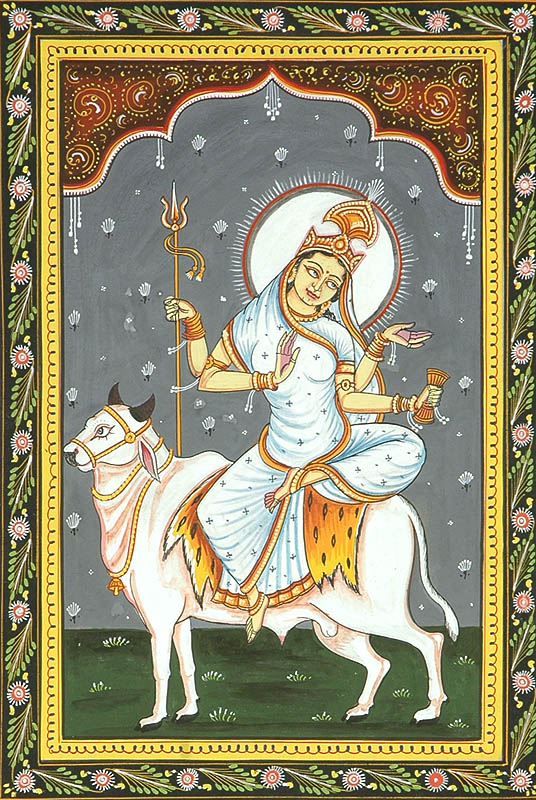 8. Mahagauri (September 27th-28th)
8. Mahagauri (September 27th-28th)
“Great white goddess”; detachment, purification, renewal, protection, virtue; Through detachment and devotion, we emerge purified, shining and radiant after surrendering in the dark night. Rejuvenative herbs and foods are good today.
Goddess of “siddhis”; magical, spiritual or mystic powers and blessings, fulfillment of desires, devotion, divine union; Invite Goddess to reveal her presence to you everywhere and in every moment.
Personal Practice Ideas for Navaratri
If possible, it is great to reduce our workload and gather with community at local temples or places of worship. We can also create a little time and space at home and conduct some personal practices to celebrate Goddess energy. Dive into your own heart to connect with the inner Goddess in the ways that resonate most with you! Here are some ideas to do at home or with a group throughout the nine nights of Navaratri:
Altar
Create a sacred space, a Durga altar, or a Goddess altar. Even if you already have one, you can refresh it in some way or rearrange it specifically for Navaratri. Include images or statues of the Goddess(es) you have a relationship with. This could be according to one of the groups of forms above.
Invocation
Even if you don’t have much time, dedicate at least a few minutes each day to connecting with the Divine Mother in front of your altar, calling her energy into your life and being.
Journal
Write in your journal about what qualities of Goddess you perceive and connect with. What aspects would you like to strengthen or to cultivate more deeply? Write any and all prayers and offer them to the form of Goddess that appeals to you.
Light
Offer light to illuminate Goddess’s power, helping her to shine more brightly into the world and your life. You can light a candle by the altar and keep it burning when you’re at home. You can even keep an electronic tealight on symbolically when you are away.
Flowers/Grains
Offer flowers or grains (even a small dish of dried rice) to celebrate Devi in the form of mother nature, fertility, the abundance of the harvest, and the cycle of life.
Offerings
Offer incense, bells, water, or food if you feel called, by placing it on the altar, or mentally offering it to Goddess throughout the day. You can also offer something symbolic of your own work or practice, whatever you have been cultivating for harvest through the year. In offering this you surrender the fruits of your efforts to the Divine Mother.
Fasting
Some people choose to fast in some variation, if this is something you have practiced before. This might include fasting during the day, fasting with only milk or fruit, or abstaining from alcohol and non-vegetarian foods during Navaratri.
Chanting
Chanting the Devi Mahatmyam, a verse to the Goddess, is a common practice during the nine-night festival. You can also chant another Goddess mantra or songs that are special to you and your relationship with Devi.
Jai Ma Durga!
Personal Vedic Astrology readings and forecasts are available Here.
Did you like Maha Navaratri 2017? Please Like, Comment and Share!
Save
Save
Save
Save
Save
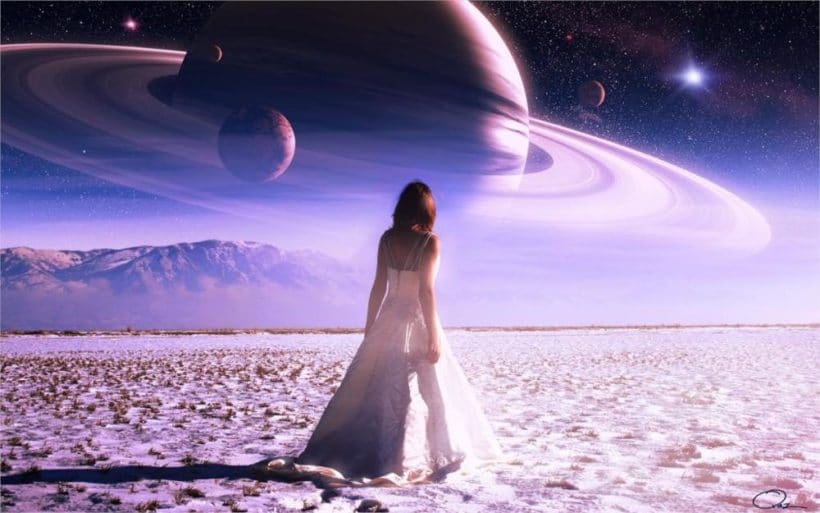
by Somya Devi | Sep 18, 2017 | Astrology, Conjunctions, Holy Days, Planets Changing Signs
New Moon in Virgo
The new lunar cycle begins Tuesday, September 19th, at 10:30 pm PDT, with Sun and Moon in sidereal Virgo. After a couple of months full of a lot of emotion and fire with many planets (and eclipses!) in Cancer and Leo, we have a chance to ground out a little bit more under the influence of earth-sign Virgo. Virgo is ruled by Mercury, the planet of the intellect, which brings a more practical and impartial nature to our energies this month. There is opportunity for curiosity and learning. The cycle begins in the Vedic nakshatra called Uttara Phalguni, which reminds us to take time in relaxation in order to re-kindle our productive energy.
The placement of Mercury and the nodes at the time of the Dark Moon, however, continue to make for a strong amount of “shadow” and subconscious energy to be present. Mercury, the lord of Virgo, will be in the 12th house from the Sun and Moon, and joining closely with Mars, showing a lot of intensity in the subconscious and potential for feeling disconnected. This New Moon also occurs under a full kala sarpa yoga, an alignment in which all seven planets are in between the two nodes of the Moon, Rahu and Ketu, in the cosmic circle.

Kala Sarpa
The kala sarpa yoga can be translated as “black snake” or “serpent of time.” The Moon transits the entire zodiac each month, so for two weeks of each month Moon will be on the other side of this axis, breaking the kala sarpa yoga, but for half of the month all planets will fall on one side of the “black serpent.” This will occur frequently over the next several months, when all seven planets will be situated to one side of the nodal axis (see photo) for half the month. The Moon transits the entire zodiac each month, so for two weeks of each month Moon will be on the other side of this axis, breaking the kala sarpa yoga, but for half of the month all planets will fall on one side of the “black serpent.”
When this alignment occurs, more of the shadowy and subconscious energy represented by the nodes is present. We may expect to be more introverted during this time, but it is also possible that more disruptive events can occur. People who are born under this alignment tend to have many “heavy” experiences throughout life. There can still be many positive and auspicious events during this time as well (or for those born under a kala sarpa yoga), but they tend to come after or despite some hardships or challenges.
Look for this yoga to occur for half the month from now through January of 2018. We experienced a similar occurrence last year (2016) from roughly September through January. This doesn’t happen every year, but we happen to be in a time where both Jupiter and Saturn, the slower-moving planets, are both to one side of the nodal axis. Thus this alignment occurs when the faster-moving planets, Sun, Mars, Mercury, and Venus, (plus Moon for half of each month) are also on one side of the axis.
Navaratri
Thankfully, there is a wonderful opportunity at hand to get in touch with the shadowy, subconscious energy of the nodes, through ritual worship and practice offered by Navaratri, the “nine-night” festival of the Goddess, which begins on the first day of this lunar cycle. This is a Hindu festival dedicated to worshiping the Goddess, Devi, in her many forms, for nine days and nights. As the night represents darkness and ignorance, we pray to her to help reveal and remove our shortcomings, bestow blessings, and confer wealth and knowledge. We face the darkness and call on the Divine Mother to remove it and let the atman, or the pure divinity within each of us, shine forth.
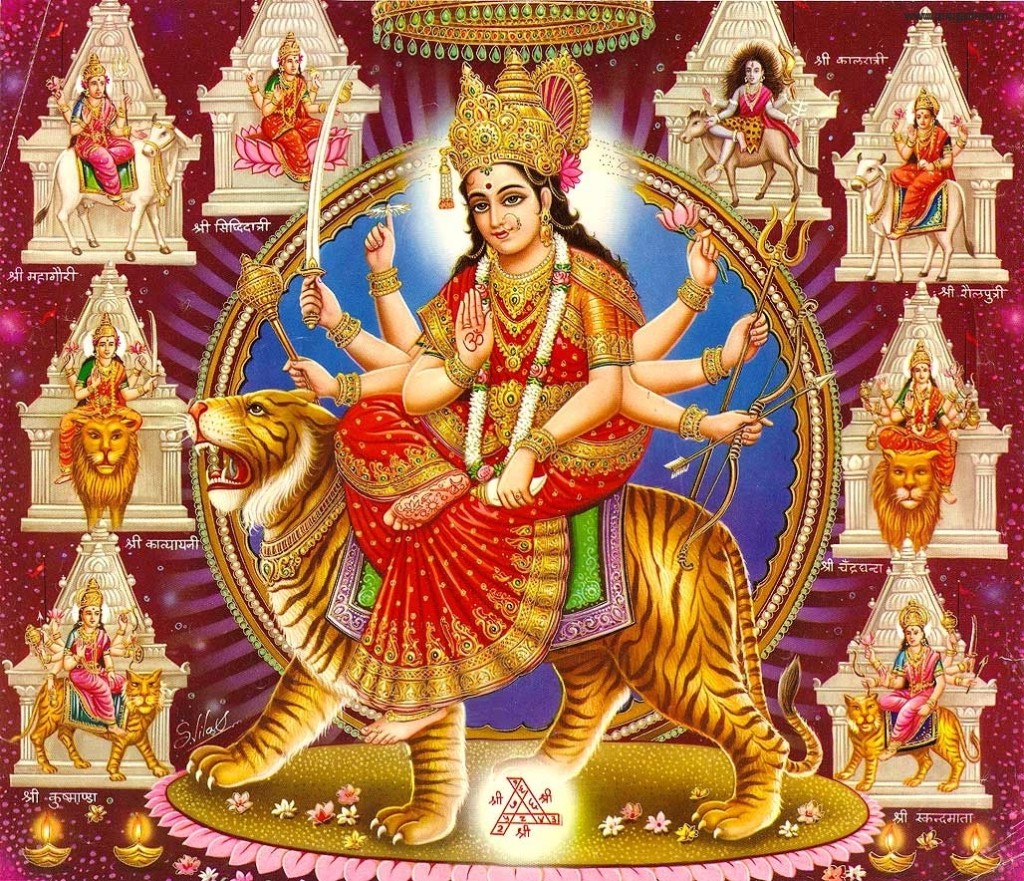 Navaratri worship can include creating a special altar to the Goddess, and making daily offerings including flowers, food, incense, light (a flame), ghee, as well as prayer, meditation, mantras and bhajans (devotional songs). The Devi Mahatmya (a.k.a. Chandi Path), the story of Durga, is a traditional text to read throughout this festival. Occurring in the fall-time in India and the northern hemisphere, this Navaratri also coincides with the harvest season, and is a time to give thanks for the abundance of the harvest and pray that it carries us through the winter season.
Navaratri worship can include creating a special altar to the Goddess, and making daily offerings including flowers, food, incense, light (a flame), ghee, as well as prayer, meditation, mantras and bhajans (devotional songs). The Devi Mahatmya (a.k.a. Chandi Path), the story of Durga, is a traditional text to read throughout this festival. Occurring in the fall-time in India and the northern hemisphere, this Navaratri also coincides with the harvest season, and is a time to give thanks for the abundance of the harvest and pray that it carries us through the winter season.
In many places, the first three nights of Navaratri are dedicated to Goddess in the form of Durga or Kali, warrior goddesses who help us to cleanse our impurities, the next three to Lakshmi, goddess of prosperity and devotion, and the last three to Sarasvati, goddess of wisdom. In other traditions, there are nine different forms of the Goddess honored on each of the nine days and nights. Be sure to follow me to receive daily updates throughout the festival!
Nodes Have Changed Signs
Since the onset of the eclipse cycle in early September, the nodes, Rahu and Ketu, have fully transitioned from the Leo-Aquarius axis to the Cancer-Capricorn axis. This completes one year-and-a-half transit as it begins another. From now through March of 2019, we will experience Rahu in Cancer and Ketu in Capricorn. The obsessive, insatiable Rahu in Cancer will cause us to experience a heightened state of emotionality throughout this time, with perhaps overwhelming sensitivity at times. The confusion of the nodes impels us to take time to get a better understanding of our hearts, and much will be revealed around the eclipse cycles that come in January-February 2018, July-August 2018, and January-February 2019.
With Ketu now transiting sidereal Capricorn, we will have to observe our shadows in the way that we balance our emotional nature with our practicality. Ketu in Capricorn could make us resistant to taking responsibility and practical steps for the future, but he will eventually raise self-awareness around any challenges we have here. We can be very self-critical in the area of Ketu’s transit, which will also affect each individual where Capricorn falls in the natal chart. Conversely, we may encounter impatience, restlessness, and even lust in the area of life indicated by Cancer in our natal chart, while Rahu transits there. I am happy to offer this Full Report and Forecast for Your Sign Here. (If you’re already on the free mailing list, you’ll be getting it in your inbox later today!)
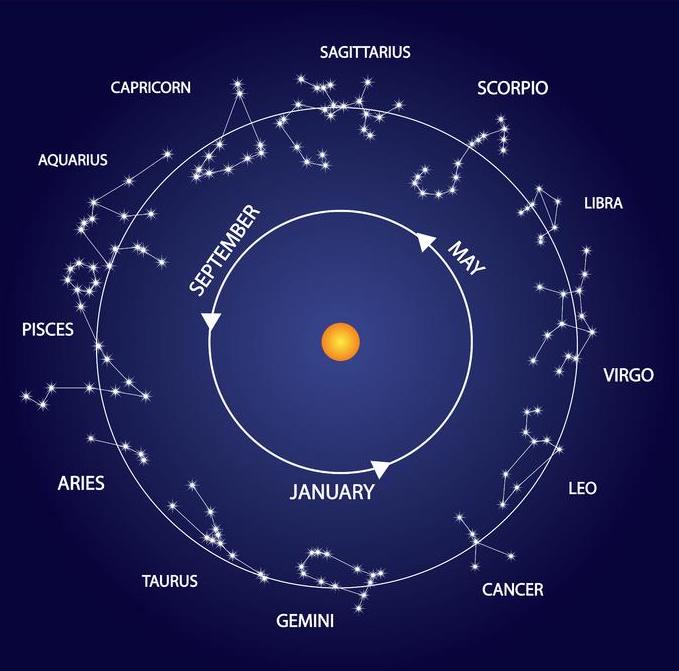
Jupiter in Virgo/Libra
Jupiter has technically transitioned zodiac signs recently, moving from sidereal Virgo’s into sidereal Libra’s designated slice of the pie-in-the-sky. Virgo is a much larger constellation than Libra, however, and in areas where abundant stars are visible just after sunset, one can see that Jupiter is still traversing the constellation of Virgo. The two do not each take up 30° of the 360° ring of the zodiac, in real observational terms, but rather Virgo takes up more than that portion while Libra covers less. Thus, we may be beginning to feel some energy of Jupiter in Libra (more inspiration for harmony, compromise, and the arts), I believe we are still experiencing a strong quality of Jupiter in Virgo (elevating our desire for organization of life’s details).
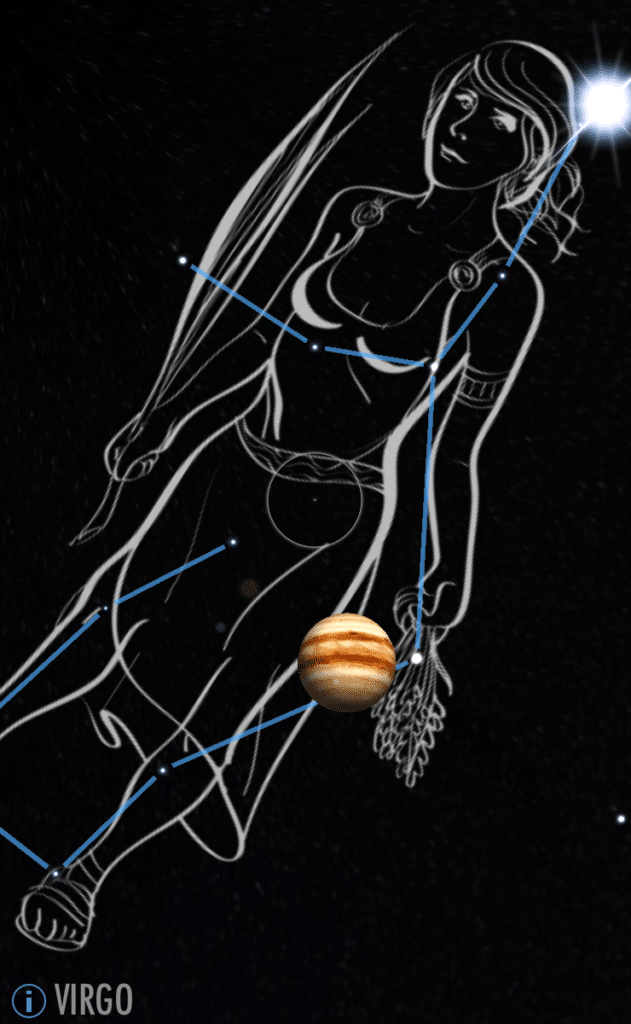 Also remember, most Western astrologers will say that Jupiter has been in Libra for the last year already, which can cause some confusion. That is based on the tropical zodiac, based on the seasons. Now is a great example of how the tropical zodiac does not correlate with the observable position of the planets and constellations as we see them from earth.
Also remember, most Western astrologers will say that Jupiter has been in Libra for the last year already, which can cause some confusion. That is based on the tropical zodiac, based on the seasons. Now is a great example of how the tropical zodiac does not correlate with the observable position of the planets and constellations as we see them from earth.
In the Vedic zodiac, Jupiter is still considered to be in the constellation of Chitra, which bridges the designations of Virgo and Libra. This nakshatra correlates with the star called Spica within Virgo (which Jupiter is closely conjunct at the moment), and translates as “the brilliant,” as it is one of the brightest stars in the sky. It is the sign of the celestial architect, and does bring forth a strong artistic quality. This is, therefore, a good time to allow your artistic inspiration to shine through, especially through both skillful and intelligent endeavors.
Mercury, Mars and Venus in Leo
Mercury, Mars, and Venus are all transiting sidereal Leo now. Venus in Leo can cause us to bring forth a lot of “me-first” in relationships, while the proximity of Mars and Mercury in this fire sign can lead to arguing, so be especially aware of these tendencies this month. The three are all catching an aspect from Saturn, now moving forward in direct motion in Scorpio, so that could help to add some mature caution to our impulses.
Save
Save
Save
Save
Save
Save
Save

by Somya Devi | Jul 5, 2017 | Astrology, Conjunctions, Events, Holy Days, Planets Changing Signs, Retrograde
Guru Purnima – Full Moon in Sagittarius
Each year, the full Moon in the Hindu month of Ashadha is dedicated to celebrating our gurus. This year’s Guru Purnima falls on the night of July 8th in North America and India, with the Moon reaching peak fullness at 9:07 pm PDT on Saturday. This year, Guru Purnima’s full Moon falls in Purvashada nakshatra (Vedic constellation), in the middle of sidereal Sagittarius, close to the galactic center. The Moon will be opposite the Sun in sidereal Gemini, where we began this lunar cycle.
Guru
The Sanskrit word guru is most commonly translated as “teacher.” It refers not only to the mighty spiritual teachers that are often associated with this word, but can indicate teachers in many fields of study or practice. One might have a spiritual guru, a yoga guru, an astrology guru, or even a knitting, cooking, or physics guru. “Gu” is often translated as darkness or ignorance while “ru” implies dispelling, disseminating, or removing. Guru as an adjective often implies grandeur or weight, frequently translated as “heavy,” which is a way that one might describe our most influential teachers. Students of jyotish will also recognize Guru as the name for Jupiter, who even the ancients knew as a large and profoundly influential planet. His influence in our lives is often in the realms of higher teachings and philosophy, and his position in someone’s natal chart can tell us about their path of learning and relationships with teachers. (For more rumination on the concept of guru in general, check out previous years’ articles.)
Purnima
Each month, as the Moon waxes and wanes his way through the ecliptic, he undergoes 30 phases known as tithis in Vedic astrology. Although the transition is smooth, the tithis are delineated distinctly, and each one carries a certain supportive energy. The purnima phase, roughly a day long, is the fullest phase of the Moon, with the peak of fullness happening at the last moment of the phase (given as Full Moon time), before the light on the Moon begins to recede again as we enter the waning phase.
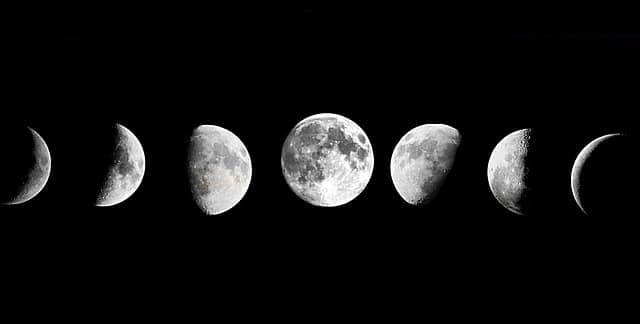
Purnima is generally thought of as the most auspicious phase of the month, and is positive for most activities, especially spiritual activities. There is a harmony of lunar and solar energy at this time. The Moon influences the ebb and flow of our watery emotions and our state of mind. We are most able to perceive this subtle body within when the outer Moon is fully illuminated. It is also a time where opposite poles within us (and in the external solar system), are both illuminated at the same time. Wherever the Full Moon occurs, it is on the exact opposite side of the zodiac from the Sun. On this Full Moon, the Sun is illuminating the Gemini part of the sky while the Moon’s light brightens Sagittarius for us. We are better able to integrate the two opposite poles within us when this occurs.
Sagittarius Full Moon
The Sagittarius section of the sky carries an energy of optimism and idealism, under Jupiter’s idealistic rulership. With the Moon here we are inspired to act on our beliefs, and share our purpose with the world. There is a great charitable nature here. Sagittarius is opposite from Gemini, where Sun and Moon began this lunar cycle, which is a place of much more practicality and impartiality, ruled by Mercury. On this full Moon we are able to see a better path towards balancing our flexible, curious, intellectual side (airy Gemini) with our passionate and idealistic side (firey Sagittarius).
Purva Ashadha
The Vedic sky is divided into 27 sections or nakshatras, along the same band of the ecliptic as we see the twelve major zodiac signs. These smaller sections give us much more information about the energy coming from that part of the cosmos, and the mood that the planets will take on as they pass there. This Full Moon falls in Purva Ashadha nakshatra, known as “the invincible one.” There is a great deal of optimism and power here, so this could be a great time to face some fears and challenges that require confrontation. The water deity Apas presides here, strengthening our connection to the water element and our inner sensitivity.
As you tune into your own heart under the Guru Purnima full Moon, acknowledge the teachers and gurus who have and continued to support you along your journey. This is a particularly auspicious day for honoring them, upholding tradition, and even setting intentions for new paths of learning or teaching that you plan to follow.
Jupiter, Venus & Saturn
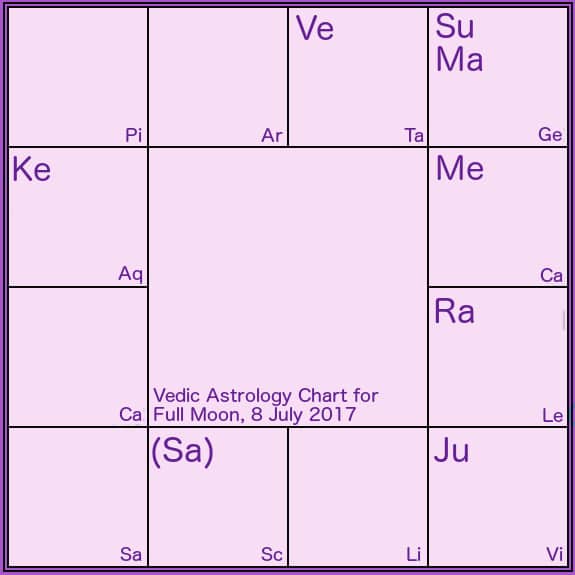 The Guru planet himself is in Hasta nakshatra at the moment, the sign of “the hand,” which adds even more expansion to our opportunities for learning and strengthening our skills. He is also aspecting Venus, who is now in Taurus, his own sign. Venus in Taurus (most of this month), elevates the artistry in our life, bringing more beauty and amplifying our connection with all sensual pleasures — nature, art, music, food, and our surroundings in general.
The Guru planet himself is in Hasta nakshatra at the moment, the sign of “the hand,” which adds even more expansion to our opportunities for learning and strengthening our skills. He is also aspecting Venus, who is now in Taurus, his own sign. Venus in Taurus (most of this month), elevates the artistry in our life, bringing more beauty and amplifying our connection with all sensual pleasures — nature, art, music, food, and our surroundings in general.
With this aspect it could be a good month to improve your material situation … but be aware that retrograde Saturn is also aspecting Venus now, having just transited back into sidereal Scorpio. While Jupiter’s aspect helps us to expand in Venusian endeavors, Saturn’s disciplinarian mood may bring up feelings of restriction. Take this as a lesson to broaden your vision and look at the long-term results of your decisions. Indulging in your pleasures now may require a bit of hard-work and commitment because of Saturn’s influence, but that is a reminder of the effort we will need to put forth over time to support our actions.
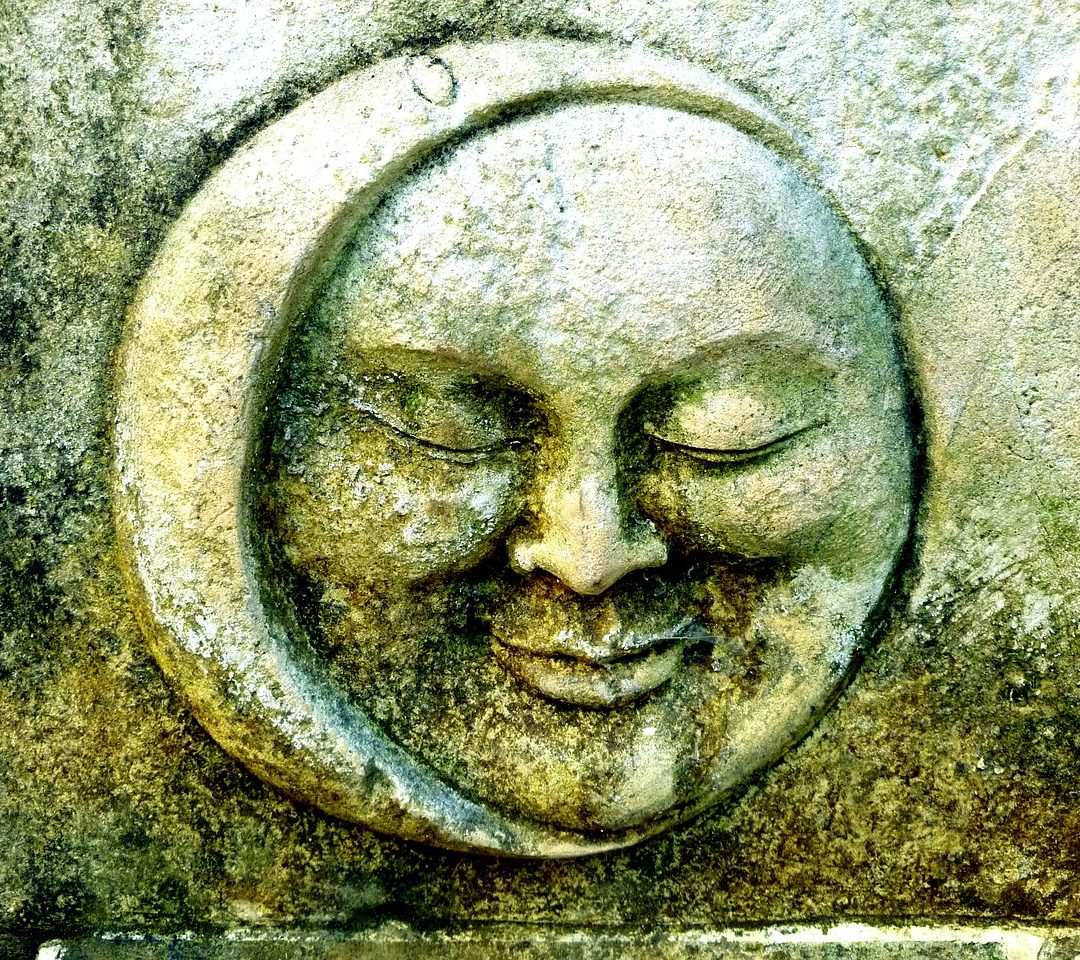
by Somya Devi | Apr 24, 2017 | Astrology, Conjunctions, Events, Holy Days, Retrograde
Healing New Moon in Aries + Akshaya Tritiya
This Wednesday brings a new Moon cycle, starting us off with the energy of Aries and the Vedic nakshatra of Ashwini. The Sun and Moon coincide on the dark night of Tuesday, April 25th, with the waxing lunar cycle beginning at 5:16 am PDT on April 26th. Both Aries and Ashwini bring on the energy of new beginnings, as the first major and minor signs of the zodiac.
Ashwini Nakshatra
 Ashwini is a Vedic constellation found within the first 13°30′ of sidereal Aries. Known as the “horsewoman” or the “twin horses,” this nakshatra is ruled by the Vedic deities called the Ashwin Kumars. These horse-headed twins are known as the physicians of the Gods, and thus the new Moon here leads us into a month of healing and exploring new types of medicine (especially herbal), as well as starting new ventures.
Ashwini is a Vedic constellation found within the first 13°30′ of sidereal Aries. Known as the “horsewoman” or the “twin horses,” this nakshatra is ruled by the Vedic deities called the Ashwin Kumars. These horse-headed twins are known as the physicians of the Gods, and thus the new Moon here leads us into a month of healing and exploring new types of medicine (especially herbal), as well as starting new ventures.
What kind of healing do you need to cultivate in your life right now?
What medicines or holistic arts have been calling to you that you are ready to explore more deeply?
Aries
One caveat of the horse-power energy offered by Ashwini, and the headstrong, Mars-fueled strength of Aries, the ram, is that we sometimes tend to rush into things that we do not have the endurance to finish. Of course, we’re still experiencing the slowed-down energy of having three planets retrograde — Mercury, Saturn, and Jupiter — so that may curb our enthusiasm a bit and allow for more foresight to meld into our springtime fervor.
 The Sun, in particular, is exalted right now during his transit of Aries. This gives us an immense sense of physical vitality. It’s a great time to re-start our exercise regimes (yes, even if they already started and fizzled out around the Gregorian new year in January), and other projects that are fueled by our inspiration and gut “yes!” The direction that we wield the horse’s (or ram’s) head right now will be the one where we find the most momentum as we bound into our goals and ventures through the summer. The Sun’s energy, as well as our own, are strongest during the summer months.
The Sun, in particular, is exalted right now during his transit of Aries. This gives us an immense sense of physical vitality. It’s a great time to re-start our exercise regimes (yes, even if they already started and fizzled out around the Gregorian new year in January), and other projects that are fueled by our inspiration and gut “yes!” The direction that we wield the horse’s (or ram’s) head right now will be the one where we find the most momentum as we bound into our goals and ventures through the summer. The Sun’s energy, as well as our own, are strongest during the summer months.
What direction do you want to steer your energy for the coming year?
Where do you feel the most inspiration, and want to plant seeds whose potential will grow throughout the lightening season?
What projects have you had in mind for a while that you feel some extra gusto for right now?
Three Planets Retrograde
With Saturn, Jupiter, and Mercury all retrograde right now, we have the potential for some deep introspection along with our high inspiration.
Saturn retrograde helps us to dive deep into our long-term goals and commitments, especially around our work. Saturn also rules over two specific areas of life for each individual, and those areas may be under serious question right now, as you begin to align them with your values over the next two years of his Sagittarius transit.
Jupiter is also retrograde, giving us the opportunity to re-evaluate our goals as far as education and higher learning are concerned. Many people may be reconsidering going back to school, or alternatively taking a break from it. It’s also a good time to take a second look at what teachers and higher values we follow closely, and seeing if these internal relationships are changing for us at all right now. Jupiter also rules two areas of your life that could feel like they’re at a stand-still or going backwards right now.
Mercury retrograde comes more frequently and lasts for only three weeks (as opposed to many months for Jupiter and Saturn). Through his motion, Budha (Mercury) gives us a constant reminder not to plummet ahead too fast with what we think we know. The intellect, our impartial observer, needs times to reset itself, slow down, and look with fresh eyes, so that we don’t become overpowered by the passion of Mars, the opinions of Jupiter, or the desires of Venus (to name a few other influences). Mercury retrograde is a good time to check ourselves, become more curious and observant, and slow down our communication.
This could be a bit more difficult while Mercury transits Aries and Ashwini, who add more fire and head-strong certainty to our analytical mind, so it’s a really good time for a conscious practice of active listening and breathing before speaking. Mercury turns direct again on May 3rd.
Akshaya Tritiya
Thursday/Friday this week brings the third day of the waxing Moon cycle this month, and both the Sun and Moon will be in their signs of exaltation at that time. This day known as Akshaya Tritiya occurs each year, three days after the new Moon in Aries. With Sun exalted in Aries and Moon exalted in Taurus, we feel optimum strength and inspiration as well as maximum peace of heart and mind. The divine masculine and divine feminine are both most readily available to express themselves through us.
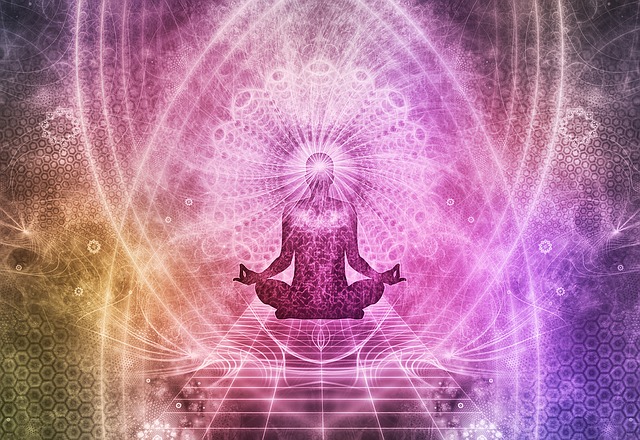
It is hence known as the day of “never diminishing,” and tradition states that any investments made on this day will yield positive returns. This includes physical and monetary investments as well as spiritual and energetic investments … i.e., starting new ventures or setting new intentions in your life. The dark moon night of the 26th is a great time to be still and sit with your intentions, becoming clear on your goals, and putting them into action on the 28th carries the likelihood of an auspicious outcome. (Of course, with the three planets still retrograde it can help to consult an astrologer for the specific timing of any launches … but connecting with your heart and divine guidance are naturally more open pathways on this day as well.)
Wishing you a blessed new astrological year!
Click Here for Personal Vedic Astrology Readings and Coaching
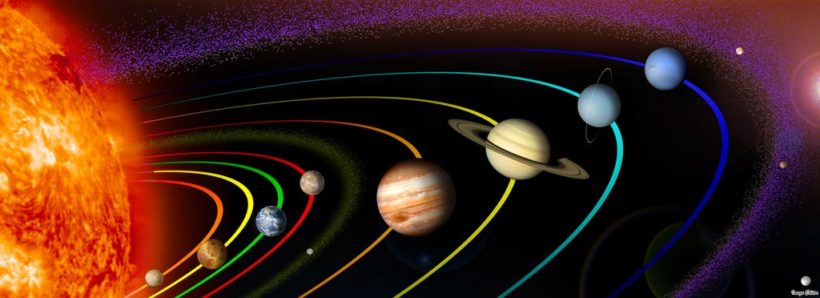
by Somya Devi | Apr 6, 2017 | Astrology, Conjunctions, Events, Holy Days, Retrograde, Uncategorized
Virgo Full Moon, Hanuman Jayanti, and Retrograde Slowdown
Title Photo Credit: “01 The Solar System PIA10231, mod02” by Image Editor, C.C. 2.0.
This Monday, April 10th brings the purnima full moon phase under a mass of retrograde planets. The Moon reaches peak fullness in sidereal Virgo at 11:08 pm PDT. In contrast to the sensitive and dreamy nature of Pisces that led us into this lunar cycle, the Virgo full moon illuminates for us some more grounded and practical ways of looking at the flood of emotions we have experienced lately.
Venus and Pisces
You probably remember my emphasis on Venus this Moon cycle, since the planet of desire and relationships has been having a heavy influence lately. Venus joined the Sun and Moon in Pisces at the start of this Moon cycle, setting the tone for (another) month of really focusing on relationships and how we go about achieving pleasure in this world. Venus has been transiting Pisces since late January, where he’s considered exalted.” This time frame has compelled us to realign our desire with the cosmic desire, taking a look at what our truest desires really are, and seeing how that relates to our most cherished values. Pisces is a place where we can learn to surrender into the divine flow, and also come into much deeper contact with our emotions. It’s also a sign that brings up the possibility of escapism, so if you have that tendency it’s a good time to watch out for it.
Since March 4th, Venus has been on his retrograde course. This semi-rare occurrence (happening once every 18 months), is a time where we seriously back up and reflect on our relationships as well as our pleasures. I have seen a LOT of people experiencing a degree of retreat in relationships as well, feeling more aversion to partners and feeling much more inwardly drawn. We seem to notice everything that’s wrong with the relationship, or the partner, or better yet in our own approach to human harmony. It can certainly feel a bit painful at times, but this is an opportunity for us to become more self-aware, and elevate the way that we approach and behave in our relationships.
- What recent revelations have you had about your personal relationship style?
- When you check in with yourself and allow yourself to feel your true desires, what do you find?
- How do your desires relate with your highest values, philosophy, and beliefs?
Virgo Full Moon
This Virgo full moon is a great time to actually seek and find some tangible methods of implementing that elevated approach to pleasure. Virgo is an earth sign ruled by Mercury (the intellect), so this full moon guides us towards practical and implementable tools to improve our modes of relating, and reaching our desires. Jupiter joins the full moon here, so our belief structures and higher guidance is a strong support right now. We have the chance to take tools from our highest teachings and create daily practices and specific methods that take us towards our goals and desires.
- What small daily practice can you add to your life that harmonizes both your desires and your beliefs?
- What conscious plan of action can you implement, either on your own or with a partner, to better support your relationships?
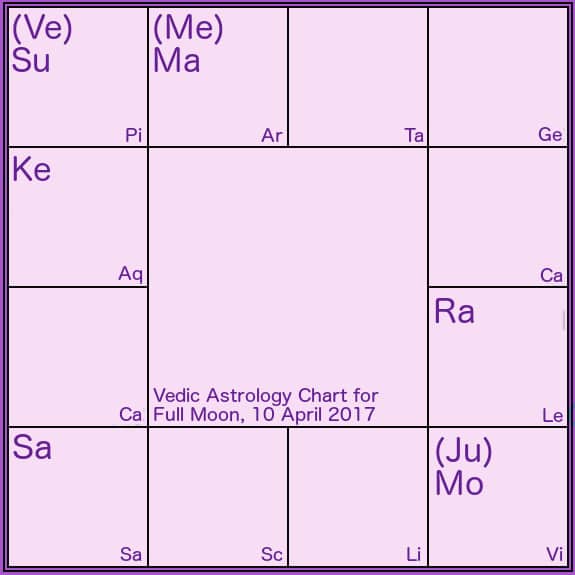 Chitra
Chitra
This full moon falls within the section of Virgo known as Chitra, “the brilliant.” This is a very potent nakshatra (Vedic constellation) for taking the beauty that we perceive through Venus and birthing it into form in the world. The deity of this star is Vishvakarma, the celestial architect, who reminds us of the cosmic harmonic perfection that is truly an amalgam of beauty and order (think sacred geometry). This concept elicits the understanding that desire and beauty are not exclusive from sensibility and logic.
- As your own architect, what steps can you take towards weaving more beauty and harmony into structured practices your life?
So Much Retrograde!
Though the full moon phase usually has us feeling a little bit more active and outward, this time around might really be better served with some personal retreat time. There is a lot to reflect on due to Venus retrograde alone, but on top of that, this purnima also finds Jupiter, Saturn, Mercury, Rahu and Ketu retrograde (the nodes always move in apparent retrograde direction). That’s six out of nine Vedic grahas appearing to move “backwards” through the zodiac. This mass of retrograde planets lasts through the week, from April 9th through the 15th.
This could mean that we will experience a major slowdown in almost all areas of life next week. Don’t worry, this just means that it’s a time to schedule some downtime and go inward. It’s not the best time to plan on starting new ventures or important milestones in life. In the area where I live, this week is spring break for a lot of the schools. A little vacation or retreat could definitely be appropriate right now, as things aren’t really moving forward anyway in terms of work, relationships, education, and communication. But be prepared for a few possible hiccups in travel logistics or scheduling of events.
On the following Friday, the 15th, Venus will turn direct. We will have hopefully found more clarity around our relationships and desires by then, and can begin to better implement our plan of action the between then and the end of May, as Venus continues his journey forward through Pisces.
Saturn Retrograde
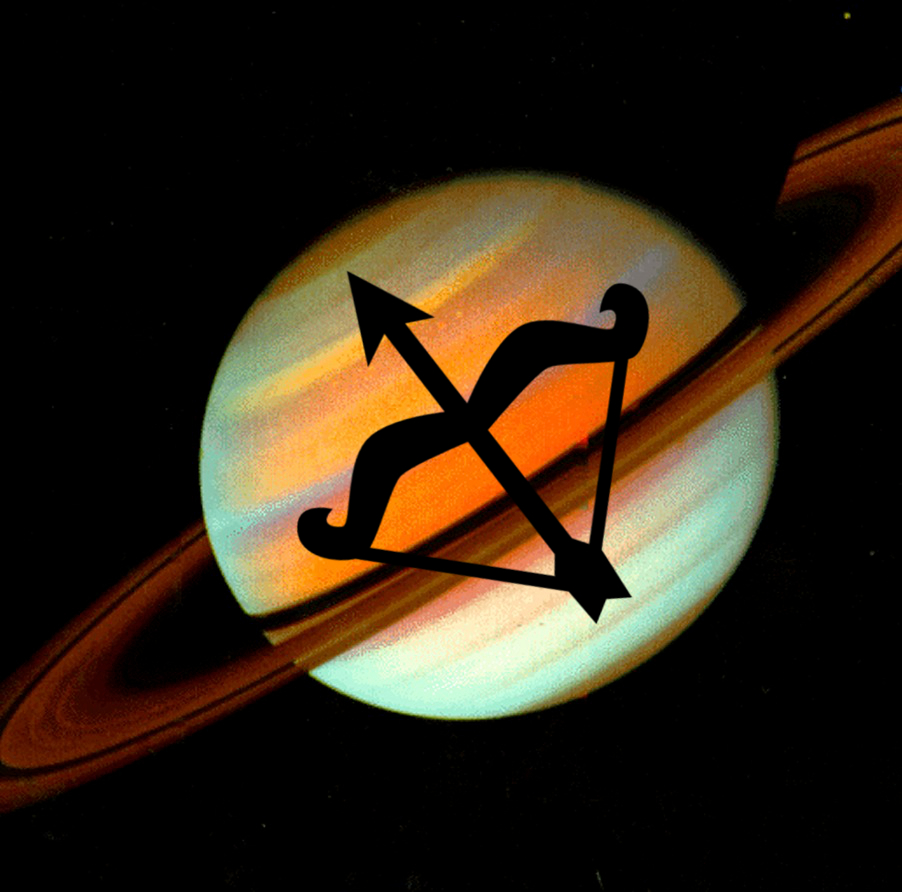 Shani or Saturn is one of the planets whose retrograde motion recently began. He is the planet governing our commitments, perseverance, and work ethic, so with this motion we may be feeling ourselves slow down, and beginning to reconsider our long-term goals, particularly around career. This retrograde transit lasts from now through August 25th, during which time he will transit back into Scorpio (having only recently begun his journey through sidereal Sagittarius). This will give us the chance to take another last look at the commitments we were working through during his Scorpio transit over the last two years, which are very particular for each individual sign. (Email me for the free Saturn Retrograde in Scorpio e-book if you didn’t get it yet.)
Shani or Saturn is one of the planets whose retrograde motion recently began. He is the planet governing our commitments, perseverance, and work ethic, so with this motion we may be feeling ourselves slow down, and beginning to reconsider our long-term goals, particularly around career. This retrograde transit lasts from now through August 25th, during which time he will transit back into Scorpio (having only recently begun his journey through sidereal Sagittarius). This will give us the chance to take another last look at the commitments we were working through during his Scorpio transit over the last two years, which are very particular for each individual sign. (Email me for the free Saturn Retrograde in Scorpio e-book if you didn’t get it yet.)
Remember, above all, Saturn is here to teach us patience. With Mars in Aries while Saturn is slowing down, you might feel like a fireball wanting to speed ahead but frustrated at your ability to do so. This week’s mass of retrograde planets is giving you the opportunity to slow things down and turn inward for a minute, reflecting on what is really important.
Retrograde dates to remember:
- Jupiter Retrograde: February 5th – June 9th
- Venus Retrograde: March 4th – April 15th
- Saturn Retrograde: April 5th – August 25th
- Mercury Retrograde: April 9th – May 3rd
Hanuman Jayanti
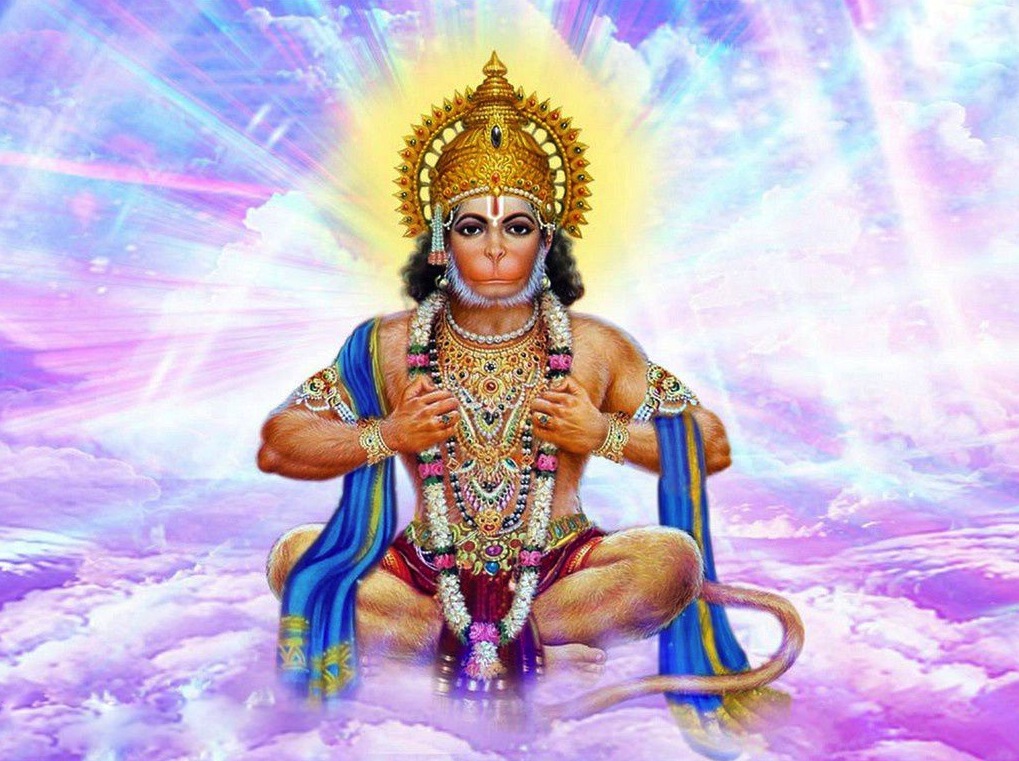 The purnima full moon phase this month also indicates Hanuman Jayanti, the celebration of the birth of Lord Hanuman. This Vedic deity represents the penultimate devotee, and shows us the immense strength that great faith, humility, and service can bring forth from within us. With all of this retrograde motion, and the powerful influence of the “Venus in Pisces” Moon cycle we are traversing, devotional practice is probably the best medicine. Chant, sing, meditate, and especially, find some ways to be of service, in order to honor Hanuman this Monday.
The purnima full moon phase this month also indicates Hanuman Jayanti, the celebration of the birth of Lord Hanuman. This Vedic deity represents the penultimate devotee, and shows us the immense strength that great faith, humility, and service can bring forth from within us. With all of this retrograde motion, and the powerful influence of the “Venus in Pisces” Moon cycle we are traversing, devotional practice is probably the best medicine. Chant, sing, meditate, and especially, find some ways to be of service, in order to honor Hanuman this Monday.
Be sure to follow me and join the mailing list to stay up-to-date with Vedic astrology news and offers!
*I know some Western astrologers cringe to hear Venus called “he,” but Shukra is seen as a male deity in traditional Vedic thought … though his attributes are feminine.
Save
Save
Save
Save
Save
Save


 Chitra
Chitra



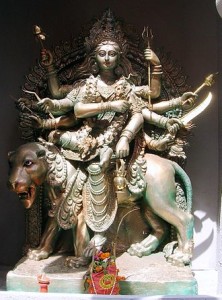



 Navaratri worship can include creating a special altar to the Goddess, and making daily offerings including flowers, food, incense, light (a flame), ghee, as well as prayer, meditation, mantras and bhajans (devotional songs). The Devi Mahatmya (a.k.a. Chandi Path), the story of Durga, is a traditional text to read throughout this festival. Occurring in the fall-time in India and the northern hemisphere, this Navaratri also coincides with the harvest season, and is a time to give thanks for the abundance of the harvest and pray that it carries us through the winter season.
Navaratri worship can include creating a special altar to the Goddess, and making daily offerings including flowers, food, incense, light (a flame), ghee, as well as prayer, meditation, mantras and bhajans (devotional songs). The Devi Mahatmya (a.k.a. Chandi Path), the story of Durga, is a traditional text to read throughout this festival. Occurring in the fall-time in India and the northern hemisphere, this Navaratri also coincides with the harvest season, and is a time to give thanks for the abundance of the harvest and pray that it carries us through the winter season.
 Also remember, most Western astrologers will say that Jupiter has been in Libra for the last year already, which can cause some confusion. That is based on the tropical zodiac, based on the seasons. Now is a great example of how the tropical zodiac does not correlate with the observable position of the planets and constellations as we see them from earth.
Also remember, most Western astrologers will say that Jupiter has been in Libra for the last year already, which can cause some confusion. That is based on the tropical zodiac, based on the seasons. Now is a great example of how the tropical zodiac does not correlate with the observable position of the planets and constellations as we see them from earth.
 The Guru planet himself is in Hasta nakshatra at the moment, the sign of “the hand,” which adds even more expansion to our opportunities for learning and strengthening our skills. He is also aspecting Venus, who is now in Taurus, his own sign. Venus in Taurus (most of this month), elevates the artistry in our life, bringing more beauty and amplifying our connection with all sensual pleasures — nature, art, music, food, and our surroundings in general.
The Guru planet himself is in Hasta nakshatra at the moment, the sign of “the hand,” which adds even more expansion to our opportunities for learning and strengthening our skills. He is also aspecting Venus, who is now in Taurus, his own sign. Venus in Taurus (most of this month), elevates the artistry in our life, bringing more beauty and amplifying our connection with all sensual pleasures — nature, art, music, food, and our surroundings in general.
 Ashwini is a Vedic constellation found within the first 13°30′ of sidereal Aries. Known as the “horsewoman” or the “twin horses,” this nakshatra is ruled by the Vedic deities called the Ashwin Kumars. These horse-headed twins are known as the physicians of the Gods, and thus the new Moon here leads us into a month of healing and exploring new types of medicine (especially herbal), as well as starting new ventures.
Ashwini is a Vedic constellation found within the first 13°30′ of sidereal Aries. Known as the “horsewoman” or the “twin horses,” this nakshatra is ruled by the Vedic deities called the Ashwin Kumars. These horse-headed twins are known as the physicians of the Gods, and thus the new Moon here leads us into a month of healing and exploring new types of medicine (especially herbal), as well as starting new ventures. The Sun, in particular, is exalted right now during his transit of Aries. This gives us an immense sense of physical vitality. It’s a great time to re-start our exercise regimes (yes, even if they already started and fizzled out around the Gregorian new year in January), and other projects that are fueled by our inspiration and gut “yes!” The direction that we wield the horse’s (or ram’s) head right now will be the one where we find the most momentum as we bound into our goals and ventures through the summer. The Sun’s energy, as well as our own, are strongest during the summer months.
The Sun, in particular, is exalted right now during his transit of Aries. This gives us an immense sense of physical vitality. It’s a great time to re-start our exercise regimes (yes, even if they already started and fizzled out around the Gregorian new year in January), and other projects that are fueled by our inspiration and gut “yes!” The direction that we wield the horse’s (or ram’s) head right now will be the one where we find the most momentum as we bound into our goals and ventures through the summer. The Sun’s energy, as well as our own, are strongest during the summer months.



 The purnima full moon phase this month also indicates Hanuman Jayanti, the celebration of the birth of Lord Hanuman. This Vedic deity represents the penultimate devotee, and shows us the immense strength that great faith, humility, and service can bring forth from within us. With all of this retrograde motion, and the powerful influence of the “Venus in Pisces” Moon cycle we are traversing, devotional practice is probably the best medicine. Chant, sing, meditate, and especially, find some ways to be of service, in order to honor Hanuman this Monday.
The purnima full moon phase this month also indicates Hanuman Jayanti, the celebration of the birth of Lord Hanuman. This Vedic deity represents the penultimate devotee, and shows us the immense strength that great faith, humility, and service can bring forth from within us. With all of this retrograde motion, and the powerful influence of the “Venus in Pisces” Moon cycle we are traversing, devotional practice is probably the best medicine. Chant, sing, meditate, and especially, find some ways to be of service, in order to honor Hanuman this Monday.